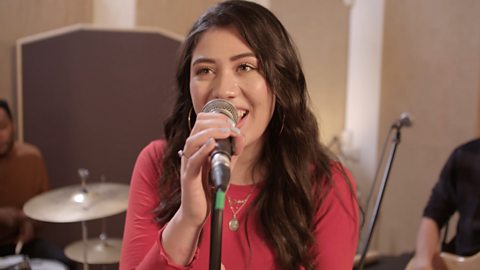- Find out how a beat is put together on a drum kit.
- Hear how percussion, drums and beats are used by artists like Georgia, King Sunny Ad├й and Tchaikovsky.
- Make your own junk percussion.
Watch the band use a drum kit and percussion to play different beats.
BEAT PLAYING
DIFFERENT PARTS OF DRUM KIT PLAYING
BEAT CONTINUES
DRUM SOLO
TAP FINISH
JAZZY DRUM BEAT
Tara: I love jazz; always makes me want to start singing.
Marcelo: Can you play anything in a Latin style?
Dujon: I donтАЩt think so.
Marcelo: I used to play this beat all the time with my old band, back in Brazil.
LATIN DRUM BEAT PLAYING
G├ЬIRO SCRAPING
TAMBOURINE JANGLES
MARACAS SHAKING
GUITAR TAPPING & CHORDS
What is percussion?
Percussion instruments are hit, scraped or shaken to create a sound with players often using their hands or sticks to hit an instrument. There are many types of percussion including:
- Drum kit - often used for pop and rock music. It is used to play a steady beat that helps people tap their feet or dance along to the music.
- West African drums - in some traditional dance music like West African drum music, all the instruments are percussive.
- Orchestral music - percussion, including drum kits, timpani and glockenspiel, are often used by orchestras.
- Junk percussion - percussion made from anything you like - including a packet of rice, a saucepan, or a barrel.
Listen to these examples of performances with percussion
Listen to Mo Beru Agba by King Sunny Ade. The musicians play complex rhythms on the djembe тАУ traditional African drums. Listen to the variety of sounds the players can produce by striking different parts of the drum.
Watch Georgia playing the drum kit on Never Let You Go. There is a drum machine as well as a drum kit. Listen for the backbeat on the snare on beats two and four in the chorus.
Listen to the snare drums and bass drum in the climax of Tchaikovsky's 1812 Overture. The percussion instruments are used to add to the triumphant feeling of the music.
Putting a beat together on a drum kit
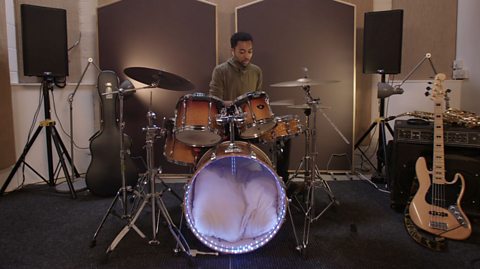
At the start of the film above Dujon plays a steady beat on the drum kit. HereтАЩs how the different parts of the kit work together.

Listen to the kick drum beat played in the video.
Bass drum
The bass drum is the lowest sound on the kit. It has a low pitch.
It is sometimes called the kick drum. It is played by pressing a pedal with your foot.
It is often played on the first beat of every bar.
Listen to the snare drum played on every other beat
Snare drum
The snare drum produces a loud тАШcrackтАЩ sound with a higher pitch.
It is often heard on beats two and four.
A snare drum played on beats two and four is called a backbeat.
Listen to the hi-hats playing a quick regular pattern.
Hi-hats
The hi-hats are a pair of metal cymbals placed on top of each other.
They have a pedal so you can have them closed or open.
If you press the pedal the hi-hats are held together closed.
- A closed hi-hat makes a short sharp sound.
- An open hi-hat produces a more open, sustained sound.
Listen to the beat played on the kick drum, snare and hi-hats.
Altogether now
Listen to a part of Dujon's beat played on the kick drum, snare and hi-hats.
Toms
A typical drum kit will have two or three tom drums. They can be called tom-toms. They will produce different pitched sounds.
Cymbals
A drum kit will often have a ride or crash cymbal. They make high sounds that decay or fade away, over a long period of time.
Listen to the drum pattern including kick, snare, hi-hat and toms. See how the beat corresponds to the drum pattern grid.
Drum pattern grids
Drum patterns can be written on grids like the one above.
Grids like this are often used on drum machines and music software.
A drum machine is an electronic instrument that produces beats. It can be used to make complex repeated rhythms.
Listen to more
Listen to the bandтАЩs live performance of the song.
Focus on the drum-kit and how it keeps the song moving.
Listen to the separate drum track.
Try playing along.
Listen to the band perform their song The Sound Of Us.
Listen to the drum track for the live recording of The Sound Of Us.
Explore the score
If you want to read the music, download the sheet music and play the beats taken from The Sound Of Us.
Download the sheet music for the band's song The Sound Of Us.

Download the sheet music for the drum score for The Sound Of Us.
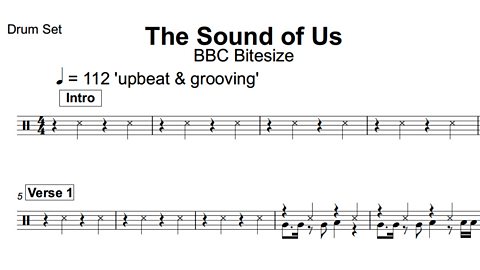
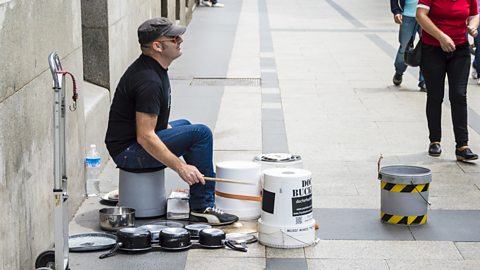
Make your own beat
You don't need a drum kit to start performing with percussion - you can make a drum kit out of anything - even rubbish!
Using junk percussion can sound really great. A few good objects include:
- Cylindrical barrels or water bottles to create a bass sound
- Plastic or metal bins to create a snare sound
- Pots and pans to recreate hi-hats or cymbals
- Plastic pipes to create the sound of toms
- Plastic bottles filled with rice to create a shaker
Once you have created two or three instruments, you can build a drum beat using the bass drum sound on beat 1, snare drum sound on beats 2 and 4, as well as more complex patterns with the hi-hat or cymbal sounds you have created.

Quiz
Keywords
| Keyword | Definition |
|---|---|
| percussion | Any instruments played by hitting, scraping or shaking. |
| drum kit | A set of drums and cymbals, played by a musician using drumsticks. |
| decay | The тАШfading awayтАЩ of a sound. |
| pitch | How high or low a note is. |
| rhythm | The pattern of notes in music. |
| backbeat | A repeated pattern that uses the snare drum on beats 2 and 4. |
| drum machine | An electronic instrument that produces drum beats. |
| junk percussion | Percussion instruments made from everyday objects. |
Play Bitesize secondary games. game
Have fun playing science, maths, history, geography and language games.

More on Performing music
Find out more by working through a topic
- count5 of 6
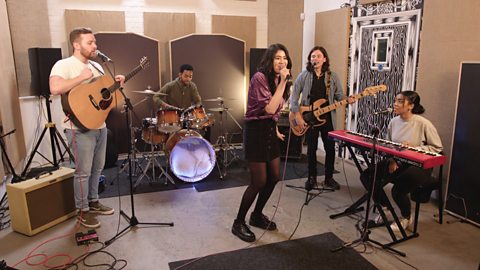
- count6 of 6
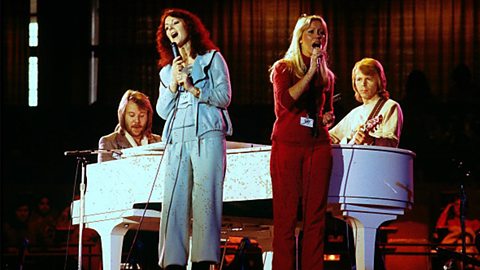
- count1 of 6

- count2 of 6
